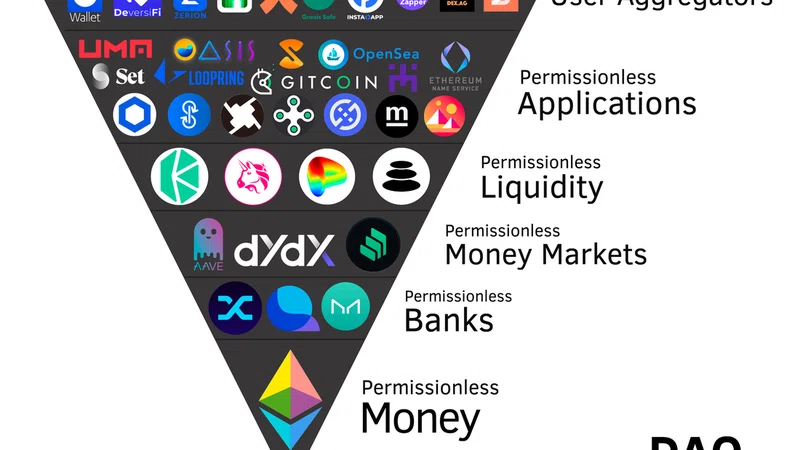For years, industry pundits have been predicting the day when artificial intelligence would eat the world of bookkeeping and accounting and, for years, I have watched as the world kept going on the same old way as before. I saw lots of paper… no jobs lost to robots… and, to my futurist frustration, accounting systems still require skilled people to do the work.
But… slowly, the world is changing.
This article series is an overview of the state of modern accounting, the problems we must overcome to reach full automation, and what needs to change for us to get there.
The battleground of bookkeeping and accounting firms has historically been around hiring and keeping Skilled Accounting Talent. Up until this point in history, accounting has been a manual or semi-manual process that a human would perform. Since accounting is complicated and requires unique skills, companies naturally wanted the best people in order for those systems to work well.
In most parts of the world, this is still the case.
Startups who set out to prove they could conquer the world through automating what people were doing — startups like ScaleFactor out of Austin, TX (See Kurt’s announcement letter laying off half their workforce here) — ultimately discovered what all of us in the professional services industry find out… There’s rarely a silver bullet or shortcut for anything in the services industry. You cannot remove people from a system originally built around people.
That being said, with the rise of new Fintech services that sync more seamlessly with our accounting systems, we’ve officially shifted into a new era of accounting & bookkeeping. We are now officially entering what I’m calling the Accounting Stack Revolution which will provide the bridge from People-based Competition to Technology-based Competition in the services industry.
That means many incumbent firms who don’t adapt will be wiped out and more companies will be outsourcing their accounting as technology eats through the accounting stack, lowering costs while improving accounting quality.
What is happening to drive this revolution?
In the old days, much of our data about a transaction (a credit card purchase, a check, etc) was separated from the transaction. We cut checks and had to reconcile them to the bank statements. We swiped our credit card and then had to reconcile and classify the credit card transaction. Tracking stuff was a harder, more manual process. This was because data and transactions were not directly linked at the point of purchase.
Today, however, data is cheap and fintech companies are building the infrastructure that make it easy to recognize, for example, that you just went to Starbucks and bought something for $5.95 and that Starbucks is a food & beverage seller. In this example, the data that is connected to this transaction is almost enough to know where to code the expense automatically. As more data becomes available to contextualize transactions, the easier it becomes for machines to code transactions.
We’ve officially shifted into a new era of accounting & bookkeeping. We are now officially entering what I’m calling the Accounting Stack Revolution which will provide the bridge from People-based Competition to Technology-based Competition in the services industry.
A Brief Orientation to the World of Accounting & Finance Software
The accounting & finance worlds can be roughly broken down into four major groups of activities…
- Counting,
- Paying,
- Getting Paid, &
- Predicting.
There are lots of other tiny things that get done within an accounting department, but this is a good sketch of what happens in every accounting department.
Counting
In the bucket we call Counting, that’s where apps like Quickbooks, Xero, Sage, and Freshbooks live. These are core accounting apps that are the central source of truth for what you’ve paid, what you owe, who owes you and what you own (bank accounts, vehicles, etc). This information is used to create financial reports. So — to create good financial reports — you have to count everything accurately.
Paying & Getting Paid
The old way people use to do accounting was fraught with errors related to getting paid and paying. That’s where applications like Bill.com and Brex have been very important. The main processes in these categories are generally called Accounts Payable (AP), Accounts Receivables (AR), Credit Card Expense and Payroll management.
AP is when you get a bill from a vendor and owe them money. AR is when a customer owes you money. Credit Card Expense managment is all about making sure people don’t use their company card to buy personal stuff they shouldn’t. Lots of fraud can happen in these areas, so it’s important for companies to manage this tightly. Lots of innovation is happening in all these areas and all these systems integrate with the most core accounting software.
For example, Gusto and Bill.com integrate with Quickbooks Online, Xero, FreshBooks, ZohoBooks, etc.
Predicting
Under the umbrella of predicting, companies like Jirav and Vena solutions offer corporate budgeting and “FP&A” tools (meaning — financial planning & analysis). These tools help companies predict what cash is going to flow in and flow out of the company over periods of time. This information is used to determine how extra money should be spent or which bills NOT to pay when sales are slow.
Other tools in this category might include FathomHQ, DataBox, PowerBI and other analytics & data visualization tools. There’s been a lot of innovation here. In the industry, we call this category Finance.
What is an Accounting Stack?
To understand what an accounting stack really is, you first have to understand the broader context of what’s is going on in technology.
In one word… APIs.
Application Programming Interface (API) just means that there’s a pipe of easily accessible data locked behind doors that anyone with the right key can get access. All you really need to know about this is that APIs allow us to connect software to data and to trigger payments with software…. LOTS OF DATA and LOTS OF FAST PAYMENTS.
So, we all know that data is getting cheaper to produce because computers are getting cheaper and faster (Moore’s Law). Now we’ve unlocked all that data through APIs to be able to connect more stuff… our bank statements, our credit cards, our smart phones, our cars… lots of stuff.
And where we use to write a manual check, for example, and then go into our accounting system and manually match it to a bill, now we can just pay that bill through our accounting system, have it automatically reconciled, the payment ACH’d without anyone having to touch a piece of paper.
So, what is an Accounting Stack, you ask?
An Accounting Stack is the combination of software products you use to take full advantage of the API Economy and start tapping in to better data.
Here’s a common “accounting stack” we use for small businesses:
- Quickbooks Online for the main source of truth and scheduled reports
- Bill.com for AP & AR
- Brex card for employee card management, low cost/free programmable ACH, and data-heavy bank deposit accounts
- Gusto Payroll
- Google Data Studio for automatic KPI Reporting
All these software programs sync directly to Quickbooks and provide the following benefits to our clients:
- Everything is updated in real time
- All reporting is automatic and reliable (it doesn’t break a lot)
- Usually eliminates the need for manual checks (reduces fraud)
- Blocks unauthorized spending on credit cards/debit cards
- System learns to recognize the correct coding for transactions to help automate the process
As you can see, though, we currently have to cobble together many different solutions to begin to really automate the accounting & finance system — many different logins to remember… many different workflows that don’t all work together… Furthermore, each of these software solutions takes a skilled professional to set up, which costs money. This added layer of cost for setup is one of the major obstacles to mass small business adoption.
What’s coming is likely to be the equivalent of Dell Computers. One easy to use brand that people trust (with a single login) and — behind the scenes and out of view — many different solution providers helping provide this bundle of services… all designed to be exceptionally easy to implement for small and medium sized businesses.
we currently have to cobble together many different solutions to begin to really automate the accounting & finance system — many different logins to remember… many different workflows that don’t all work together… Furthermore, each of these software solutions takes a skilled professional to set up, which costs money. This added layer of cost for setup is one of the major obstacles to mass small business adoption.
In Part II of this series, I’ll show you how payments technology and APIs are driving the Accounting Stack Revolution and how it can solve many of these problems elegantly.
Stay tuned.
Post Script
If you’d like help setting up your own “Accounting Stack”, we can help.
Contact us today using one of the forms on the website or email [email protected] directly to learn to get a free proposal for your project.












